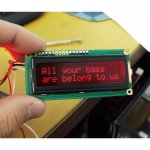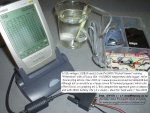"Good information so far, but the question has not been fully answered yet."
- well, what precisely is the question?
Will they work? Which ones will work?
People here have got most types of LCDs to work ; ranging from good quality ones from reputable suppliers to the cheapest tosh from unknown Ebay vendors.
The serial type LCD will require the fewest data lines (or wires).
They
should be the easiest to get going and use the least code on your PICAXE - as their on-board (usu PIC) does the hard work for you.
The parallel type which have a minimum config of 4 data plus a few control obviously require more legs on your PICAXE but will be cheaper.
So, bottom line: price vs convenience? That's your decision. If I were just starting I'd spend the extra and get the serial type or an LCD+firmware board. Once I'd got my first project running then I would consider a cheaper parallel LCD, which is harder to implement unless you copy all the necessary code from here

But for me to 'recommend' an LCD and imply that you will get it working in 5 minutes may be a little silly.
My un-humble and totally biased advice:-
For your first foray (where you want something that is definitely working when you buy it) then spend a few extra pennies and get it from a reputable supplier.
Spend even more extra pennies and go for serial type unless you are confident/competent with coding.
(You may be lucky with some cheap Ebay sourced guff, but if it's duff and you are unsure about your code, then how will you know? And will you really want to spend 3 weeks posting on this Forum before you find out? All to save a fiver....?)


